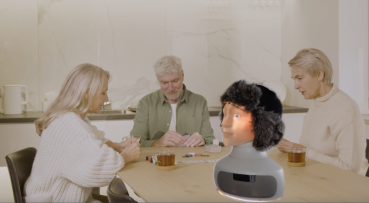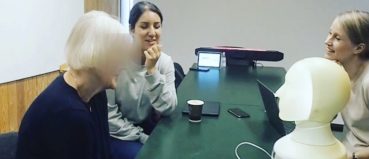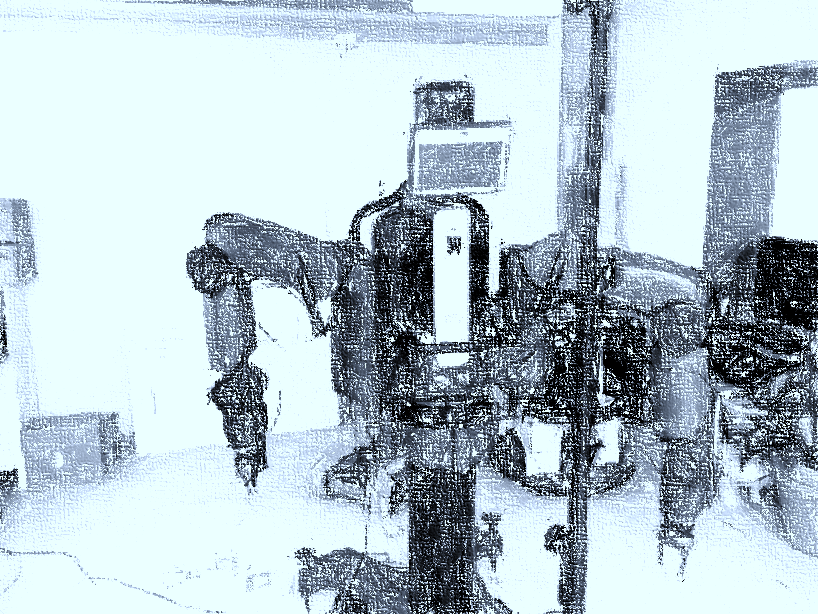 Är du vuxen som är 65 år eller äldre? Är du intresserad av sociala robotar och vill ta del av utvecklingen av en personligt sällskapsrobot? Kom och ta del av denna unika möjlighet att uppleva Furhat, världens mest avancerade sociala robot.
Är du vuxen som är 65 år eller äldre? Är du intresserad av sociala robotar och vill ta del av utvecklingen av en personligt sällskapsrobot? Kom och ta del av denna unika möjlighet att uppleva Furhat, världens mest avancerade sociala robot.
Forskningsprojektet ‘Personlig sällskapsrobot inom långtidsvården av äldre’ undersöker möjligheterna att använda sociala robotar för att ge socialt stöd till äldre vuxna i deras hem, för att minska upplevelsen av ensamhet. Roboten kommer att lära sig av samtal med användare och komma ihåg dem för att anpassa framtida samtal. Vi är intresserade av hur äldre vuxna upplever samtalet med sociala robotar, och vilken typ av samtal äldre vuxna anser som meningsfullt.
Vi söker äldre vuxna från 65 år som kan delta i studien. Studien kommer att ske den 6 och 8 mars kl. 10-12 och 14-16 på KTH Campus Digital Futures (Osquars backe 5). Deltagande inkluderar:
- Du kommer att se videor av sociala robotar i olika vardagssituationer
- Du kommer att bli frågad vilken typ av konversation du skulle vilja ha med en robot i dessa situationer
- Du kommer att ha ett kort samtal (5 min) med en robot
- Du kommer att bli frågad om dina upplevelser av att ha samtalet med roboten
Sammantaget tar dessa två moment ca 2 h.
Alla vuxna som är 65 år eller äldre är välkomna att delta. Inga förkunskaper om robotar behövs för att delta. Vi bjuder på fika och ett presentkort för ditt deltagande.
Om du är intresserad av att delta kan du svara på denna inbjudan genom att skicka “Ja” tillsammans med ditt namn, vilka dagar och tider du är tillgänglig till sannaku@kth.se eller 070-2672 422.
Ditt deltagande bidrar till kunskap om fördelarna med denna teknik för äldre vuxna, och du får möjlighet att påverka framtida lösningar. Samtidigt får du en inblick i den pågående teknikutvecklingen som handlar om robotar och artificiell intelligens.
Deltagandet är helt frivilligt och du kan välja att avbryta ditt deltagande i studien när som helst. Din integritet kommer att respekteras, och ingen person kommer att kunna identifieras från det publicerade materialet. All information om dig är helt och hållet anonymiserad.
Med vänlig hälsning,
Bahar Irfan
Postdoktor vid Digital Futures
Kungliga Tekniska Högskolan, KTH
Avdelningen för Tal, Musik och Hörsel
Email. birfan@kth.se
Tel. +46 727805162
Sanna Kuoppamäki
Biträdande universitetslektor, PhD
Kungliga Tekniska Högskolan, KTH
Institutionen för Medicinsk Teknik och Hälsosystem
Email. sannaku@kth.se
Tel. +46 702672422
Gabriel Skantze
Professor i Talkommunikation och Talteknologi
Kungliga Tekniska Högskolan, KTH
Avdelningen för Tal, Musik och Hörsel
Email. skantze@kth.se
Tel. +46 733266669



 Well, technologies may fail if they do not correspond to the users’ wishes or desires. So, there is a need for suitable user images, to ensure that millions of investments into robotics and artificial intelligence do not go to waste. Our study speaks to this need. Through developing a better understanding of how users are imagined in practice, we are now beginning to learn how and where we can improve these images; and better tailor them to our needs and expectations.
Well, technologies may fail if they do not correspond to the users’ wishes or desires. So, there is a need for suitable user images, to ensure that millions of investments into robotics and artificial intelligence do not go to waste. Our study speaks to this need. Through developing a better understanding of how users are imagined in practice, we are now beginning to learn how and where we can improve these images; and better tailor them to our needs and expectations.

